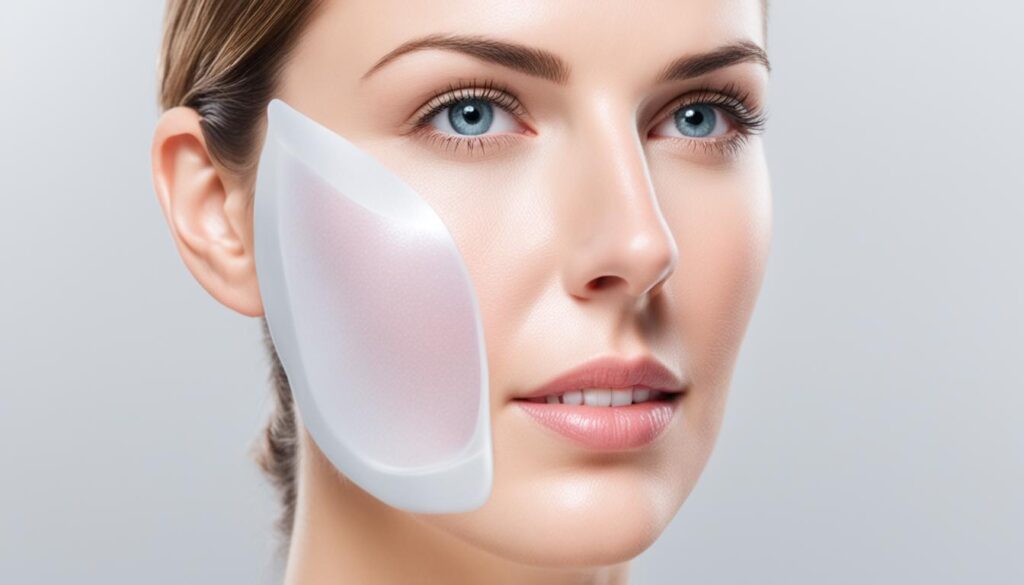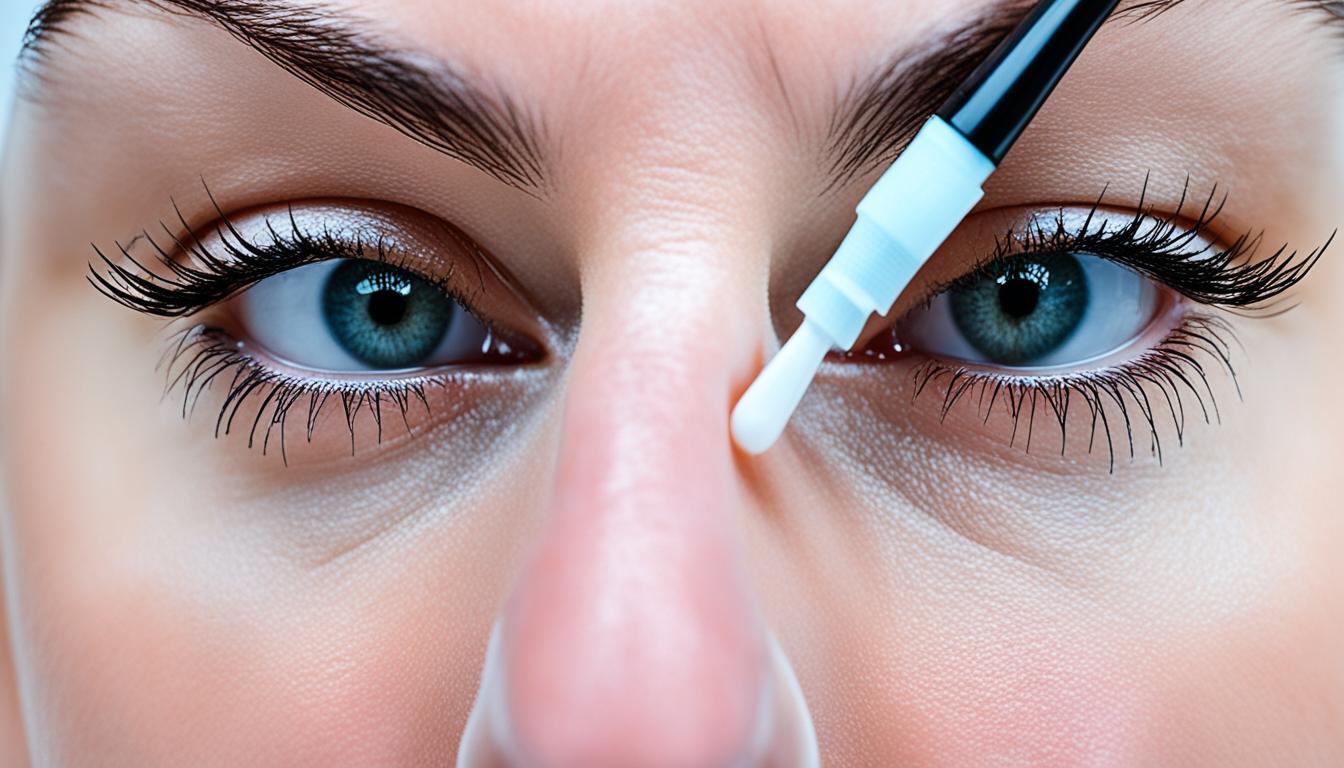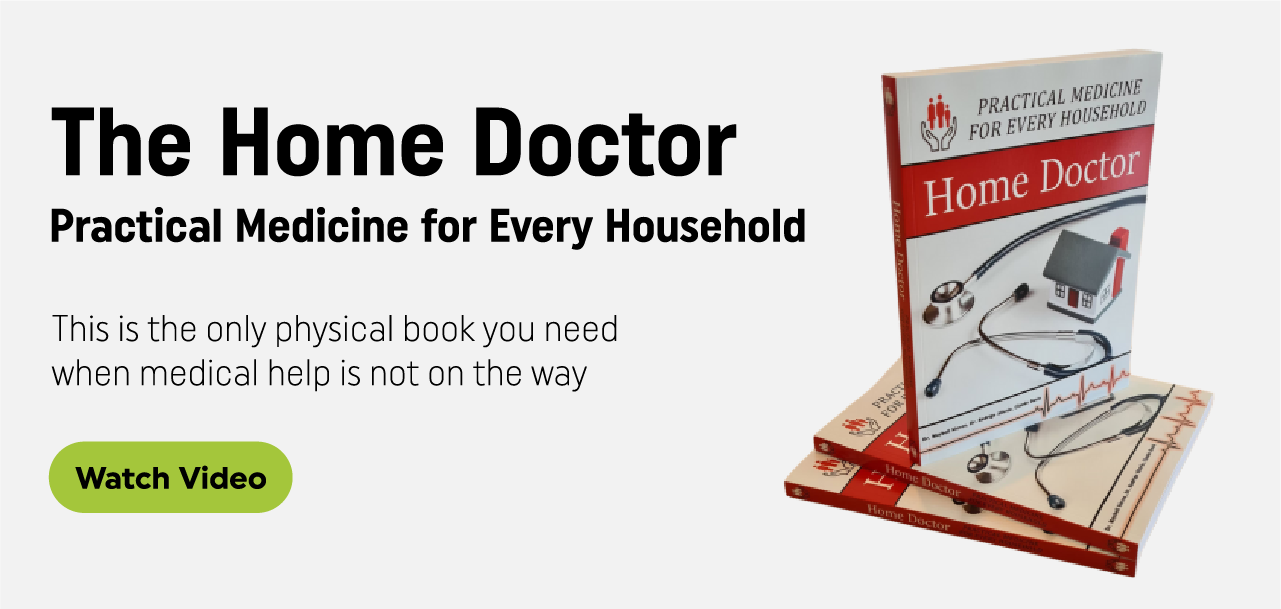Blackheads are a common and stubborn skin condition caused by the combination of oil and dead skin cells that clog pores. While cleansing and exfoliating can help loosen blackheads, deep rooted ones may require additional techniques for removal. In this guide, we will explore expert tips and tricks for safely and effectively removing deep rooted blackheads at home using natural methods and home remedies.
Key Takeaways:
- Natural methods for removing deep blackheads
- Home remedies for deep blackhead extraction
- Cleansing and exfoliating to prepare the skin
- Using steam to open up the pores
- Masks that help draw out blackheads
Cleansing and Exfoliating for Blackhead Removal
When it comes to removing deep rooted blackheads, the first step is to prioritize cleansing your face. Cleansing twice daily is essential to eliminate excess oil, dead skin cells, and dirt that can clog pores and contribute to blackheads. To effectively cleanse your face, opt for a gentle, gel-based cleanser specifically formulated for oily and sensitive skin. This will ensure that your skin is thoroughly cleansed without causing irritation or dryness.
Once you have established a regular cleansing routine, the next step is exfoliation. Exfoliating helps to remove dead skin cells and debris from the surface of the skin, making it easier to extract blackheads. However, it is important to choose a mild exfoliant to avoid irritating the skin further. You can opt for a DIY natural exfoliant or an over-the-counter scrub with gentle ingredients like oatmeal. Make sure to follow the instructions on the product and avoid harsh exfoliants that can strip the skin of its natural oils and cause redness or inflammation.
Benefits of Cleansing and Exfoliating for Blackhead Removal
“Regular cleansing and exfoliation are essential steps in removing deep rooted blackheads. Cleansing helps to remove excess oil and dirt, while exfoliation removes dead skin cells that can contribute to clogged pores. Together, these two steps create an optimal environment for extracting blackheads effectively and minimizing their appearance.”
By incorporating cleansing and exfoliation into your skincare routine, you can effectively combat blackheads and improve the overall health and appearance of your skin. Regular cleansing helps to keep your pores clear and prevent the buildup of oil and debris, while exfoliation enhances the turnover of skin cells, promoting a smoother complexion.
Remember, consistency is key when it comes to cleansing and exfoliating for blackhead removal. Make it a habit to cleanse your face twice daily and exfoliate 1-2 times a week, depending on your skin type and sensitivity. With time and proper care, you can achieve clearer, blackhead-free skin.
| Cleansing and Exfoliating Tips for Blackhead Removal |
|---|
| Use a gentle, gel-based cleanser suitable for oily and sensitive skin. |
| Opt for a mild exfoliant with gentle ingredients like oatmeal. |
| Follow the instructions on the product and avoid harsh exfoliants. |
| Cleanse your face twice daily and exfoliate 1-2 times a week. |
| Be consistent with your skincare routine for optimal results. |
Opening Pores with Steam
One effective technique for enhancing the removal of blackheads is to open your pores with steam. This process helps to loosen the blackheads, making them easier to extract. You can easily create a steam session at home without the need for a spa steamer.
To begin, follow these simple steps:
- Boil water in a pot or kettle until it produces a significant amount of steam.
- Pour the hot water into a heat-resistant bowl.
- Sit in front of the bowl with your face directly above the steam, ensuring that there is a comfortable distance between your face and the hot water.
- Drape a towel over your head to trap the steam, forming a “tent” over the bowl and your face.
- Adjust the heat intensity by raising or lowering your head to control the amount of steam you are exposed to.
- Stay in the steam session for up to 10 minutes to allow the warmth and moisture to open up your pores.
During the steam session, you may notice that your skin becomes slightly flushed, and you may begin to perspire. This is normal and indicates that your pores are opening up.

Once you have completed the steam session, you can proceed to the next steps in your blackhead removal routine, such as applying a mask or using an extractor tool.
Using Masks for Blackhead Removal
When it comes to effectively removing blackheads, masks can be a game-changer. Applying a clay or charcoal-based mask after steaming can further facilitate the extraction of blackheads, leaving your skin feeling clean and refreshed.
Clay masks are known for their ability to draw out impurities and excess oil from the skin, making them an excellent choice for blackhead removal. Look for masks that contain ingredients like bentonite or kaolin clay, which have natural absorbent properties. Applying a thin, even layer of the clay mask to your face and leaving it on for about 15 minutes allows the mask to deeply cleanse the pores and remove dirt and oil.
Charcoal masks are another popular option for blackhead removal. Charcoal acts like a magnet, attracting and absorbing impurities from the skin. These masks are effective in removing excess oil and helping to unclog pores. Like clay masks, apply a thin, even layer of the charcoal mask to your face and leave it on for the recommended duration.
Both clay and charcoal masks can be easily incorporated into your skincare routine. Use them once or twice a week, depending on your skin type and the severity of your blackheads. Remember to follow the instructions on the product and avoid leaving the mask on for too long, as it can lead to dryness and discomfort.
In addition to their blackhead removal properties, clay and charcoal masks have other benefits for your skin. They can help minimize the appearance of pores, improve skin texture, and promote a more youthful appearance.
The Benefits of Clay and Charcoal Masks:
- Deeply cleanse the pores
- Remove dirt and excess oil
- Help unclog pores
- Minimize the appearance of pores
- Improve skin texture
- Promote a more youthful appearance
After leaving the mask on for the recommended time, rinse thoroughly with warm water to remove the mask. Pat your skin dry gently and follow up with your regular skincare routine to keep your skin moisturized and balanced.
Remember, using masks alone may not completely eliminate blackheads, especially deep-rooted ones. It is important to combine mask treatments with other methods, such as cleansing, exfoliating, and steam sessions, for optimal results.
Continue reading to uncover the next step in our ultimate guide to blackhead removal: Extracting Blackheads with an Extractor Tool.

Extracting Blackheads with an Extractor Tool
Once you have opened your pores and applied a mask, it’s time to tackle those deep-seated blackheads with the help of an extractor tool. This tool is specially designed to safely and effectively remove blackheads without causing damage to your skin. Follow the steps below for safe blackhead extraction.
Gather the Necessary Tools
Before you begin, make sure you have the following items:
- An extractor tool
- Rubbing alcohol
- A clean towel
Sterilize the Extractor Tool
Start by sterilizing the extractor tool with rubbing alcohol. This step is crucial to ensure the removal process is hygienic and reduces the risk of infection or irritation.
Apply Pressure on the Edge of the Blackhead
Position the loop face of the extractor tool on the edge of the blackhead. Gently press down on the surrounding skin, applying even pressure to avoid causing any trauma to the skin.
Sweep the Loop to Remove the Blackhead
With the extractor tool in place, make a gentle sweeping motion to the other side of the pore. This motion helps to dislodge and remove the blackhead plug. If necessary, repeat this step up to two more times to ensure complete extraction.
Sterilize the Tool After Each Use
After each use, be sure to sterilize the extractor tool again with rubbing alcohol. This step is essential for preventing the transfer of dirt and bacteria to other areas of your skin and minimizing the risk of breakouts or infection.
Remember, if you are unsure or uncomfortable performing blackhead extraction at home, it’s always best to consult a dermatologist or skincare professional for safe and professional removal.
Soothing and Cooling the Skin
After extracting blackheads, it is important to soothe and cool the skin to prevent inflammation. Applying a cooling gel mask for blackhead removal or a soothing serum for blackhead removal can help achieve this. These products are specially formulated with anti-inflammatory ingredients like green tea, vitamin E, or almond oil that can calm the skin and reduce redness.
Rinsing off the cooling gel mask after use will remove any residue and prepare your skin for the next step in your skincare routine. Follow up with a gentle cleanser, toner, and moisturizer to keep your skin hydrated and balanced.
Professional Blackhead Removal Options
If home remedies and DIY techniques are not effective in removing deep rooted blackheads, you may consider professional removal options. A dermatologist or aesthetician can perform procedures like professional extraction, microdermabrasion, chemical peels, or laser therapy to remove blackheads. These techniques should only be pursued if home remedies have been unsuccessful or if you are experiencing severe pain or swelling.
Dermatologist for Blackhead Removal
A dermatologist is a medical expert specializing in the diagnosis and treatment of skin conditions. If you have persistent or stubborn blackheads that don’t respond to home remedies, seeing a dermatologist for professional blackhead removal may be a good option. Dermatologists have the knowledge, skills, and tools to effectively extract deep rooted blackheads while minimizing the risk of scarring or skin damage.
“Professional blackhead removal procedures performed by a dermatologist provide a safe and effective solution for stubborn blackheads. These procedures are tailored to your specific needs and can yield long-lasting results.”
During a professional extraction, a dermatologist will use specialized techniques and tools to remove blackheads from your pores. This procedure can help clean out your pores, prevent future breakouts, and improve the overall appearance of your skin. Dermatologists may also recommend additional treatments, such as microdermabrasion, chemical peels, or laser therapy, to further enhance the results of blackhead removal.
Benefits of Professional Blackhead Removal
Seeking professional blackhead removal offers several advantages:
- Expertise: Dermatologists are trained professionals who have in-depth knowledge of skin conditions and the best techniques for blackhead removal.
- Precision: Professional extraction ensures that blackheads are removed thoroughly and without causing skin damage.
- Reduced risk of scarring: Dermatologists have the skills to minimize scarring during the removal process.
- Long-lasting results: Professional procedures can provide more comprehensive and lasting results compared to home remedies.
- Personalized treatment plan: A dermatologist will tailor the treatment to your specific needs and skin type, ensuring the best possible outcome.
If you decide to consult a dermatologist for blackhead removal, make sure to schedule a consultation to discuss your concerns and goals. The dermatologist will evaluate your skin and recommend the most appropriate treatment options.
| Procedure | Description |
|---|---|
| Professional Extraction | A procedure where a dermatologist uses specialized tools to extract blackheads from the pores. |
| Microdermabrasion | A technique that uses a diamond-tipped wand to exfoliate the skin and remove dead skin cells, unclogging pores and reducing the appearance of blackheads. |
| Chemical Peels | A chemical solution is applied to the skin, causing the outermost layer to peel off, revealing smoother and clearer skin underneath. |
| Laser Therapy | A laser device is used to target and destroy the bacteria and debris causing the blackheads, effectively reducing their appearance. |
Conclusion
Preventing blackheads and effectively managing their removal is possible with a combination of home remedies and professional options. By following a consistent skincare routine that includes cleansing, exfoliating, and using masks, you can minimize the occurrence of blackheads. Opening pores with steam and using an extractor tool can help remove deep-rooted blackheads, while soothing the skin afterward is essential to prevent inflammation. Remember to always consult with a dermatologist or aesthetician if you experience severe cases or are unsure about any removal techniques.
In order to prevent blackheads from recurring, it is important to maintain a regular skincare routine and use noncomedogenic products. These products are specially formulated to not clog pores, reducing the chances of blackheads forming. By keeping the skin clean and properly moisturized, you can effectively manage blackheads and achieve a clearer complexion.
If home remedies do not produce the desired results, professional blackhead removal options are available. Seeking the expertise of a dermatologist or aesthetician can provide access to procedures like professional extraction, microdermabrasion, chemical peels, or laser therapy. These professional treatments can target deep-rooted blackheads and provide a more comprehensive solution in more severe cases.
In conclusion, by adopting preventive measures, utilizing home remedies, and exploring professional options when necessary, you can successfully manage and remove blackheads. Consistency, proper skincare, and professional guidance are key factors in achieving and maintaining a blackhead-free complexion.


